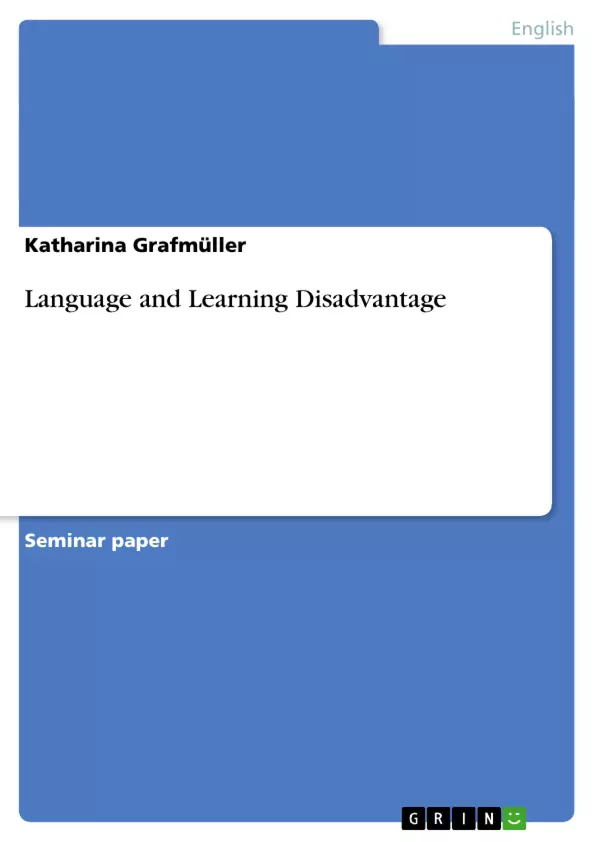Learners with a migration background are defined as children who, or whose ancestors,
have immigrated to Germany in the last decades. Nowadays it is quite difficult to
identify those learners. Not all of them have a different citizenship and some even
indicate German as their first language. Nevertheless they sometimes have immense
difficulties with the German language and therefore also in school.( Knapp 2006, 1)
With this peace of work I will explain the items to measure language competence and
some others, than migration background, that have influence on learning success.
Furthermore I will expose the graduation chances of learners with migration
background, describe their second language development and the options to assist those
learners.
[...]
Inhaltsverzeichnis (Table of Contents)
- 1 Introduction
- 2 Term definitions
- 2.1 Items to measure language competence
- 2.1.1 Items for the native language
- 2.1.2 Items for the second language
- 2.2 Items that influence learning success
- 2.2.1 Items with influence on performance in school and the attitude towards it
- 2.2.2 Items with influence on the acquirement of language competences
- 2.1 Items to measure language competence
- 3 Disadvantages of learners with a migration background
- 3.1 Discrimination of learners with migration background
- 3.2 Second language development
- 3.2.1 Preschool second language development
- 3.2.2 Second language competences in school
- 3.2.3 Reasons for second language acquirement problems
- 3.3 Ways of assistance in second language acquirement
- 3.3.1 Assistance in second language acquirement in preschool institutions
- 3.3.2 Assistance in second language acquirement in school
- 3.4 Inclusion of the first language
Zielsetzung und Themenschwerpunkte (Objectives and Key Themes)
This paper aims to examine the factors influencing the learning success of students with a migration background in Germany. It explores how language competence is measured in both native and second languages, and investigates the socio-economic and cultural factors impacting language acquisition and academic performance.
- Measurement of language competence in native and second languages
- Socio-economic factors influencing learning success
- The impact of migration background on language development
- Discrimination faced by students with migration backgrounds
- Methods for assisting students in second language acquisition
Zusammenfassung der Kapitel (Chapter Summaries)
Chapter 1: Introduction introduces the topic of language and learning disadvantages for students with migration backgrounds in Germany, highlighting the challenges in identifying these students and the difficulties they face in mastering the German language.
Chapter 2: Term definitions defines the key terms used throughout the paper, including the items used to measure language competence in both the native and second languages, and the various factors influencing learning success, such as socio-economic status and cultural resources.
Chapter 3: Disadvantages of learners with a migration background discusses the discrimination faced by students with migration backgrounds in the German education system, examining their second language development (both pre-school and in school), and exploring the reasons behind their difficulties in acquiring German. This chapter also explores methods of assistance available to support these students in second language acquisition.
Schlüsselwörter (Keywords)
Migration background, language acquisition, second language development, learning success, socio-economic status, cultural resources, language competence, discrimination, educational support, inclusion.
- Citar trabajo
- Katharina Grafmüller (Autor), 2006, Language and Learning Disadvantage, Múnich, GRIN Verlag, https://www.grin.com/document/122352



